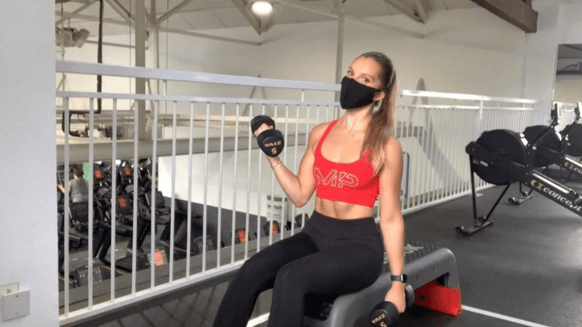The Running Warm-Up | Why and How to Warm-Up Before Your Run

Why should you warm-up before a run?
Muscles become warm as a result of increased blood flow to the area – which may be due to an external heat source causing more blood flow to the skin to help radiate heat away from the body (thus increasing muscle temperature moderately).
When we are warming up for exercise, however, the increased activity of the muscles facilitates increased blood flow, which in turn increases the temperature of the muscle.
Warming up can help to prevent injury
Increasing muscle temperature improves the elasticity and preparedness to perform the muscle, which not only reduces the risk of injuries like muscle strains but also significantly improves the performance capacity of the muscle. Increased elasticity also means that the soft tissue structures are more tolerant of loading than they are in a cooled state, meaning it is less likely you will injure yourself after a proper warm-up.
It can improve flexibility
An effective warm-up can help to acutely improve the flexibility of your joints as warmer muscles have greater elasticity. This can be good news for your running, as it’s less likely that you’ll exceed your comfortable range of movement and cause an injury when your muscles are warm and elastic. Incorporating some short-duration static and dynamic stretching in your warm-up can ensure that you make improvements to your flexibility that will stick around.
Increased training stimulus
When warming up your muscles, you should include some light resistance exercises to get each muscle working properly before a performance. This light resistance exercise may be in the form of bodyweight lunges, squats or other mobility-based drills. Not only does this prepare you for the session to come, but it also provides extra training stimulus that can result in gains for your flexibility, mobility and even contributes to improving the strength of the muscles that are supporting your joints.
The Warm-Up - 7 Running Stretches and Exercises
During an effective warm-up, you should aim to increase your core body temperature, get your heart pumping a bit faster and increase the temperature of the muscles you’re about to use. This list of exercises is ideal to get you started for a successful session.
1. Pigeon Stretch
Sitting on the floor, stretch one leg out in front of you and bend at the knee as if you were going to cross your legs. Then lean forwards with your torso, putting your bodyweight onto your leg. This helps to stretch some deep hip muscles that are about to be put to use in your session.
2. Leg Swing-Throughs
Start standing upright and raise your hip on one side so that one foot is elevated from the ground. Keeping your leg straight (but allowing your knee to bend slightly), swing your leg through, kicking up to around your hip height (or higher if you can!). Let gravity do the work to bring it down but allow your leg to swing backwards too – then repeat for around 5 reps on either side for around 3 sets. This is good for preparing the hamstrings to be repeatedly stretched during running.
3. Hip Openers
Standing straight, flex your knee up to around 90-degrees, then abduct your knee outwards before bringing your foot back to the ground. Repeat this for around 4 sets of 8. This warms up your gluteus medius, which helps to stabilise the hip and thus the knee while running, preventing knee valgus (or the knees caving in).
4. Shoulder Circles
Stick your arms out straight to the sides and make small circles with your hands, rotating clockwise then anticlockwise for around 30 seconds each way. You use your arms when you run too! This movement helps to increase blood flow in your shoulders and upper back muscles, which are responsible for helping maintain good posture as you run.
5. Heel Flicks
Standing up straight, kick your heels one at a time at your glutes in rapid succession to get your hamstrings warmed up and ready for action. Your hamstrings will be repeatedly contracting when you run, so this is the perfect exercise to get them ready for the challenge.
6. Tuck Jumps
Squat down and explosively jump straight in the air, tucking your knees to your chest as you do so. Make sure you untuck before you land! This exercise is great for preparing your muscles to produce lots of power, ready for your session.
7. Start Slow
One of the best warm-ups for running is… running. Start with a slow and easily manageable pace, gradually progressing up to your working pace.
Take Home Message
A solid warm up is an essential tool for a successful run workout, aiding in better performance and reducing the risk of injury in these cold winter months. Make sure you spend the time to focus on your warm-up and be deliberate about getting your temperature up and your heart rate pumping!




